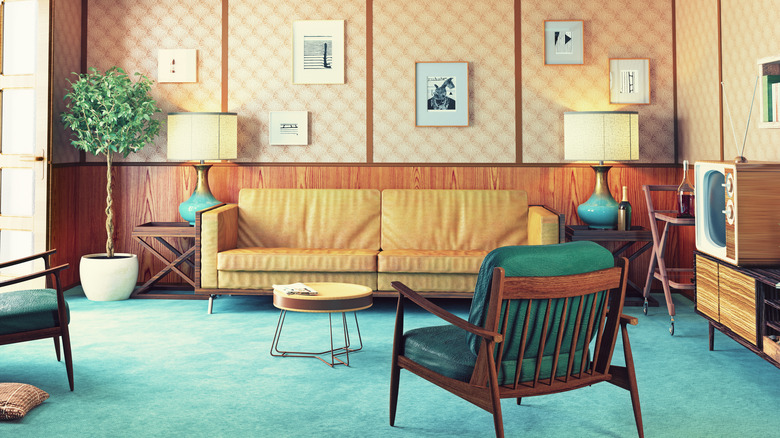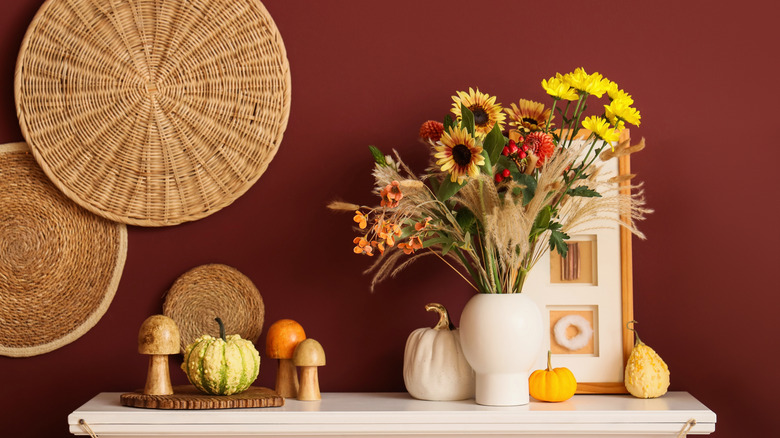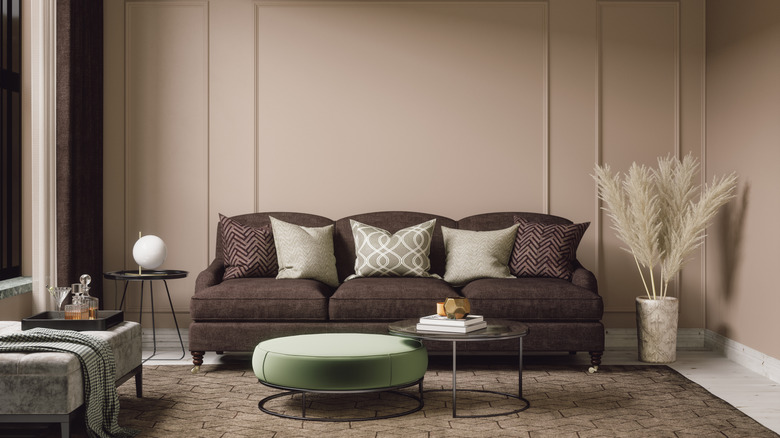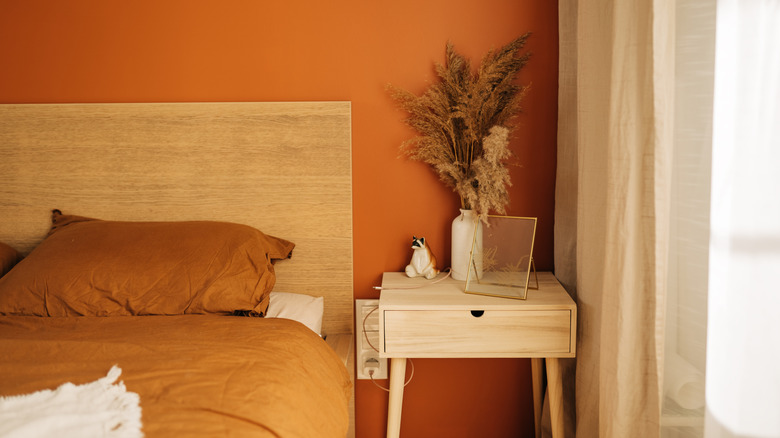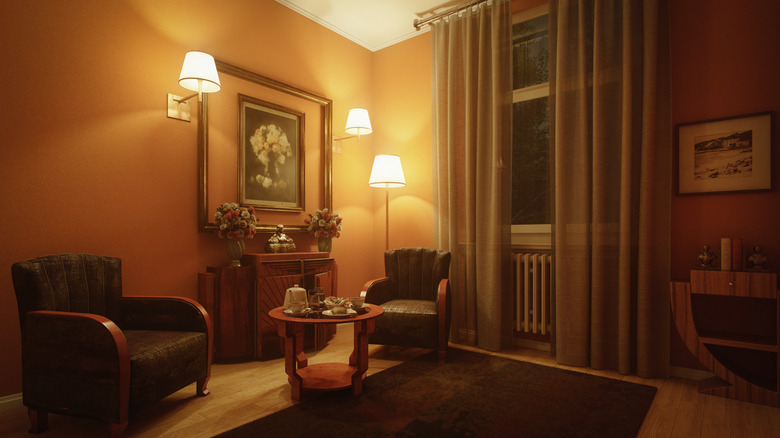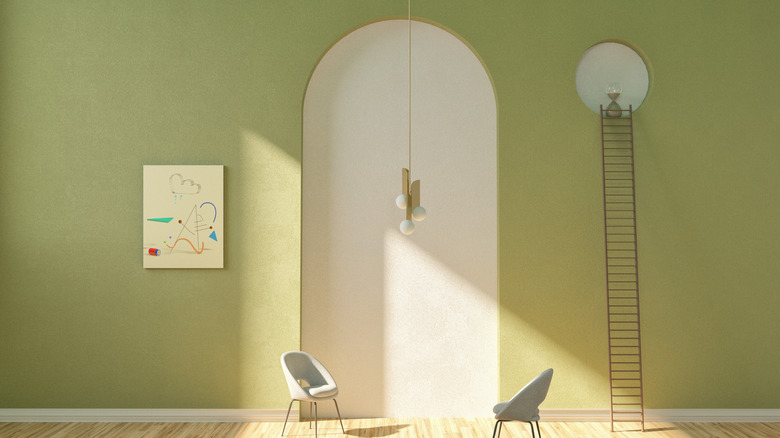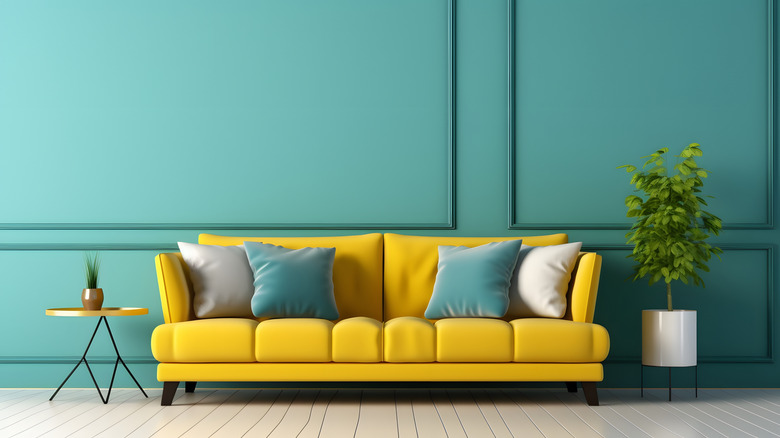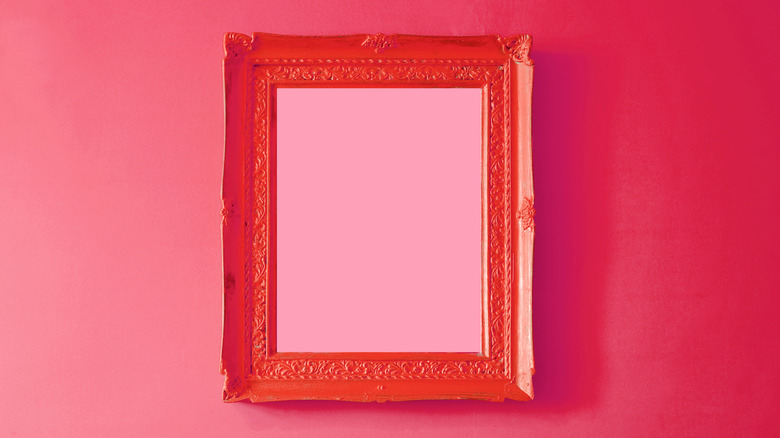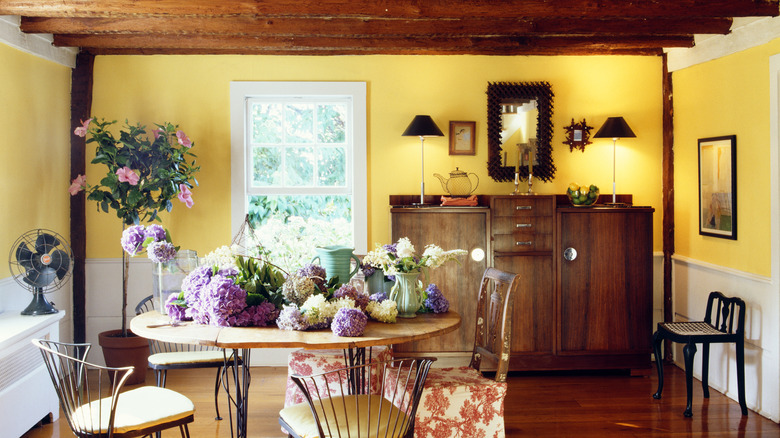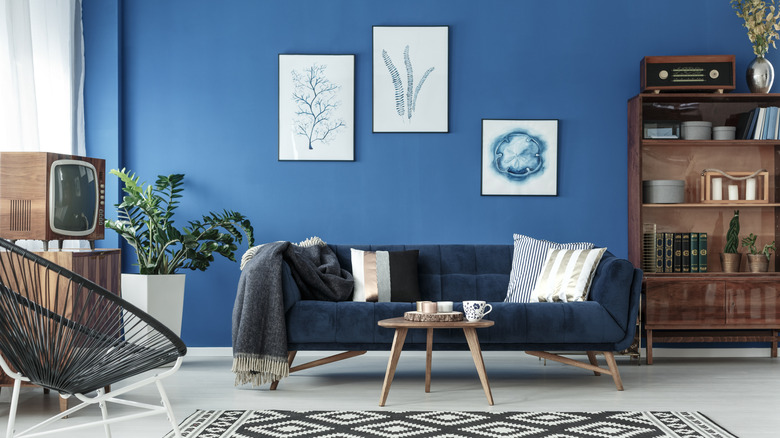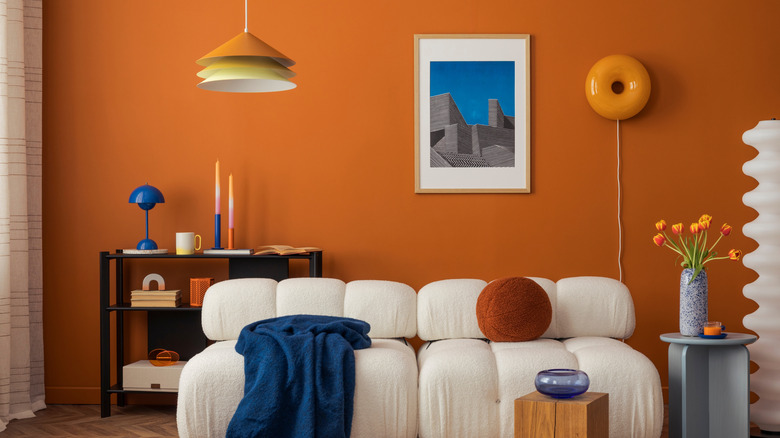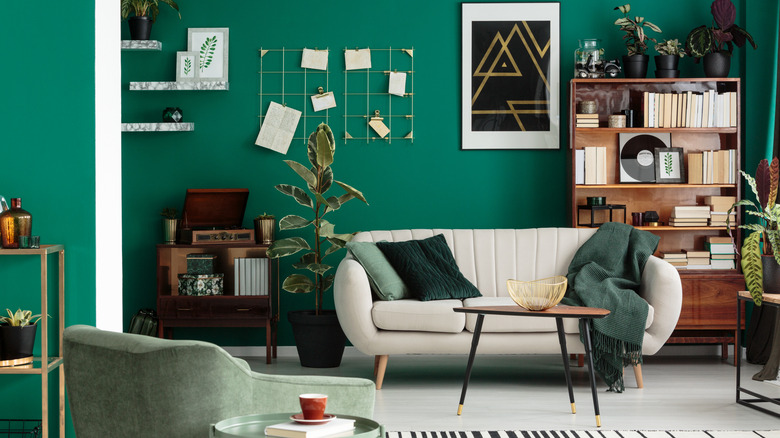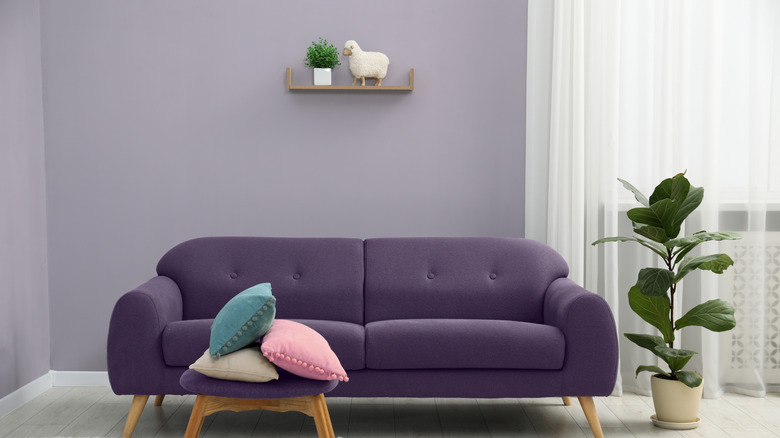12 Paint Colors Every Boomer Has In Their Home
Born between 1946 and 1964, boomers (often known as baby boomers) are often easily spotted by their interior design and color choices within the home. Every generation followed particular style trends, and there are plenty of home decor essentials you'll likely find in every boomer's home. But accompanying those style choices will be particular paint colors that might not have changed since those boomers' younger days. Keen to promote an aesthetic of warmth, tradition, and comfort, this generation's homes have paint colors that are usually cozy, welcoming, and timeless.
Having said that, though, you may also find touches of the late sixties and the seventies showing up on the walls of boomers' homes. Jewel-tone colors and vibrant wallpaper still reign supreme in many of these homes, alongside the almost ubiquitous avocado bathroom suite. Tastes may change over the decades, but boomers tend to stick with a distinctive style that they've built up and refined over the years. So, let's dip into those nostalgic paint colors that defined a generation.
Burgundy
The hottest trend color of the year that pairs perfectly with dark wood is, coincidentally, a color that you'll often see in the homes of boomers. Oxblood red, along with other burgundy shades, gives homes a touch of quiet luxury when used in the right spaces. The warmer undertones are often a choice for spaces such as cinema rooms, where a more muted atmosphere is warranted.
Beige
Boomers were and still are big fans of beige, with the neutral tones blending with many other colors and shades. Choosing a calming beige paint color for home interiors allowed boomers to experiment with more colorful and dramatic furniture, a trend that was particularly big in the 1970s. Nowadays, beige is still a popular choice, and boomers often stick with it for its softer tones that will blend in and help keep a home's atmosphere relaxed and peaceful.
Burnt sienna
Nothing sums up the 70s like the shades of burnt sienna that appeared in paint form. Boomers wanted to bring natural earthy tones into the home, with this comforting color adding warmth and a touch of sunshine to interiors. The color also worked well with the trends at the time, with homeowners looking for ways to incorporate macrame into the home, along with other features such as houseplants and wicker furniture.
Deep browns
Much like the burgundy colors listed above, deep brown was and is a popular choice with the boomer generation. It lends an air of sophistication to a room while also contributing to the welcoming atmosphere that boomers are so fond of. These deep brown tones suited the heavier furniture aesthetic often seen in the 70s, and they also work well with mid-century pieces in modern homes.
Avocado Green
You might think that avocado green was reserved for bathroom suites in the 70s. But boomers took this color further, using it to carry on the popular nature-based trend of the time onto their walls. Nowadays, avocado green can look pretty dated, but you may still find it in boomers' homes, where its popularity also once extended to kitchen suites and appliances.
Teal
For older boomers who came of age in the late 60s, bright colors were very much at the fore when it came to choosing paint for the walls. Teal was a popular choice to bring vibrancy to a room. And, as is often the way with paint colors, things have come full circle, with bold ways to decorate with teal at the forefront of many current design trends.
Raspberry
Raspberry is another color that was particularly popular in the 1960s, and you'll still see it in many boomers' houses today. Often used as a color for a feature wall or in more adventurous bathrooms and kitchens, you may still find it lurking about in corners of homes belonging to the boomer generation. However, bright colors have seen a resurgence in recent years, with raspberry colors proving a popular choice for kitchen cabinets.
Warm yellows
Warm yellows, such as honey yellow, are one of the paint shades that are perfect for a mid-century modern style, but boomers were blending the two together long before this became a modern trend. Mid-century furniture has always been a popular boomer generation choice, and the warm yellow tones help to bring out the rich tones of woods such as walnut. The sunny tones of a warm yellow can make a room seem bathed in light, even during darker times of the year.
Cleansing blues
Baby boomers love to create a calm sanctuary in their homes, so cleansing blues are a popular choice. Soothing colors lend themselves to areas such as the living room, where you'll often see boomers pairing a calming blue wall along with a similarly colored couch for an all-round cohesive look and approach to a space. Cleansing blues provide a soothing backdrop to boomers' well-loved pieces of furniture.
Burnt orange
Burnt orange was another particularly popular color with boomers in the 1970s, and now this underappreciated interior design trend is finally having its moment again, with interior designers praising it for the warmth it can bring to a space. Boomers embraced burnt orange for its connections to nature, as well as its ability to mix well with many of the design pieces on sale in the 70s.
Emerald green
The 1970s saw an explosion of jewel-tone colors, such as emerald green, which gained popularity, and this is a color that boomers continue to embrace to this day. Of course, some greens rank among the most toxic home decor colors in history, but fortunately, emerald green has always been a safe choice. This vibrant color is a popular choice for living rooms or statement walls, where it can easily blend with creams and browns, enhancing the nature trend that was so popular with boomers, as well.
Greys with undertones
Another popular option for baby boomers are colors with undertones. Shades such as greys with a purple undertone brought out by purple furniture in the same room, for example, were and are a popular choice for boomers. These shades are known as chameleon colors, as they have the ability to alter their shade slightly depending on what's been placed around them.
